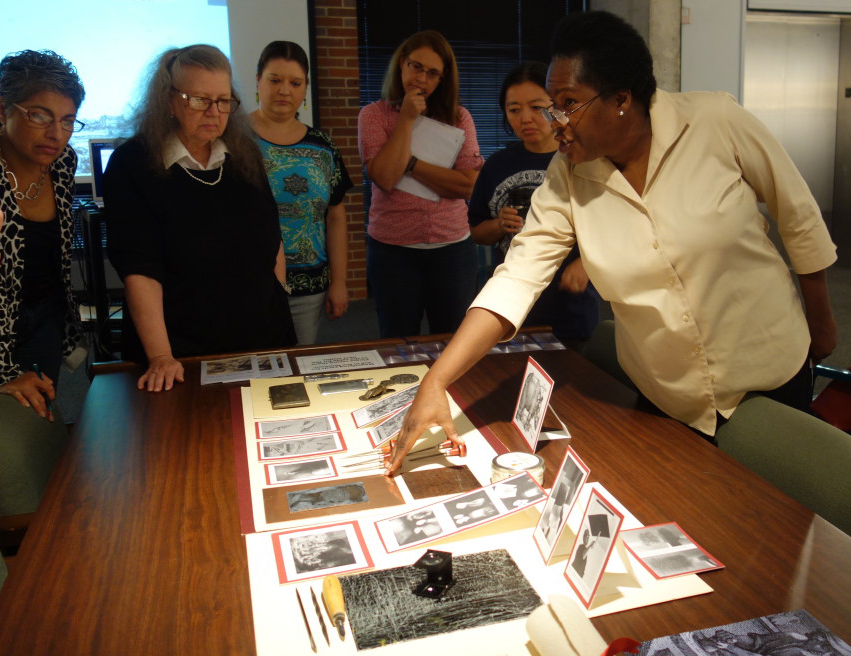
More than 12,000 people came through the doors of Florida State University’s Museum of Fine Arts to see the special two-week exhibition of original etchings by the Dutch master Rembrandt.
Considering the relatively short run of the exhibition, the show shattered museum attendance records. Nearly 3,000 people went to see “A Fortnight of Rembrandt: Selected Etchings from the Mower Collection” in its final weekend alone.
Sponsored by Florida State’s Office of the Vice President for Research, the exhibition, held Sept. 20-Oct. 6, featured more than 60 works from the private collection of Drs. Tobia and Morton Mower of Baltimore.
In addition to serving as a premiere cultural event for Tallahassee and surrounding communities, the exhibition provided opportunities to delve into the life and work of Rembrandt van Rijn (1606-1669) through educational activities and workshops for students of all ages.
Museum of Fine Arts interns, under the supervision of Viki D. Thompson Wylder, curator of education for the museum, created a series of Rembrandt Guides — web pages and pdf packets — to provide a deeper understanding of the etchings and Rembrandt’s artistic process.
The interns also helped design a PowerPoint presentation complete with music from Rembrandt’s era, biographical information on the artist, descriptions of the etching and drypoint processes used in many of the pieces, further insight into some of his etchings and an overview of Rembrandt’s legacy. The PowerPoint was shown during tours and augmentedthe exhibition by providing information not immediately obvious upon viewing.

The educational aspects of the exhibition were not exclusive to Florida State University students. Tallahassee Community College Professor Jennifer Robinson and Florida A&M University Professor Kabuya Bowens offered workshops on Rembrandt’s career and artistic techniques to K-12 teachers from Tallahassee and the surrounding area. These workshops also included interactive time with the etchings.
Eduardo Robles, FAMU School of Architecture Professor, brought students from his Design 101 class to help them understand the “possibilities of depth and expression of a single line.”
Eduardo Robles, FAMU School of Architecture Professor, brought students from his Design 101 class to help them understand the “possibilities of depth and expression of a single line.”
Advanced placement art history students from local high schools were invited to attend seminars that used the interactive materials developed by the museum interns. The high school students also made a trip to Florida State’s printmaking lab to experience what it takes to make a print from a copper plate since Rembrandt used copper plates. Bowens led the demonstration.
Florida State Department of Art faculty member Denise Bookwalter teaches traditional and contemporary printmaking techniques, and found the exhibition illuminating.
“This exhibition was really useful to look at for the tradition and foundation of Rembrandt as an etcher,” Bookwalter said. “Students do not have very much opportunity to see prints in person to be able to observe fine detail and marks that are so characteristic of an etching.”
Florida State Professor of English David Kirby brought creative writing students to the exhibition to consider how Rembrandt differed from his contemporaries by providing emotional tone and sensitive human narrative in his works.
“I took my undergraduate Honors Seminar to the exhibit because we’re studying paradigm smashers like Copernicus and Darwin and I wanted the students to see how artists changed their worlds as well,” Kirby said.
“It was the perfect show to make that point: You could see how the etchers before Rembrandt drew scenes that were realistic yet cold and flat and then how he brought warmth and emotion to his subjects’ faces and gestures. The students talked about it for days.”



